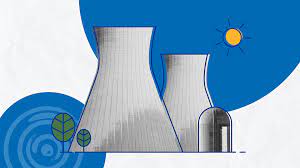Nuclear fusion has the potential to revolutionize the world’s energy supply by providing a virtually limitless source of clean and sustainable power. The process involves combining atomic nuclei to form heavier nuclei, which releases energy in the process. Unlike nuclear fission, which is currently used in nuclear power plants, nuclear fusion does not generate long-lived radioactive waste or have the potential for catastrophic accidents.
If nuclear fusion can be successfully harnessed and scaled up to commercial levels, it could provide a reliable and safe source of energy for the world’s growing population. With rising energy demands, traditional energy sources like coal, oil, and gas are becoming increasingly unsustainable, and we need to find new, cleaner sources of energy.
With rising energy demands, traditional energy sources such as coal, oil, and gas are becoming increasingly unsustainable, and we must find new sources of energy that are cleaner, safer, and more sustainable.
Nuclear fusion could provide that source. It is a virtually limitless source of energy that does not rely on fossil fuels and emits no CO2 or other greenhouse gases. This makes it an ideal solution for mitigating climate change, one of humanity’s most pressing challenges today.
Nuclear fusion has other potential benefits aside from being a clean and sustainable source of energy. For example, it could potentially power space exploration by providing a dependable and consistent power source.
A significant source of energy for spacecraft. It could also contribute to global sustainable development by allowing developing countries to access reliable and affordable energy without relying on fossil fuels.
However, commercial-scale nuclear fusion remains a significant technical challenge, with numerous obstacles to overcome before it can become a reality. The most difficult challenge is figuring out how to control and sustain the fusion reaction so that it generates more energy than it consumes. This requires extremely high temperatures and confining the fuel with magnetic fields or other techniques.
There are several nuclear fusion research projects underway around the world, including the International Thermonuclear Experimental Reactor.
A significant source of energy for spacecraft. It could also contribute to global sustainable development by allowing developing countries to access reliable and affordable energy without relying on fossil fuels.
However, commercial-scale nuclear fusion remains a significant technical challenge, with numerous obstacles to overcome before it can become a reality. The most difficult challenge is figuring out how to control and sustain the fusion reaction so that it generates more energy than it consumes. This requires extremely high temperatures and confining the fuel with magnetic fields or other techniques.
There are several nuclear fusion research projects underway around the world, including the International Thermonuclear Experimental Reactor.
Collaboration between the scientific community and governments all over the world. With the world’s energy demands increasing, nuclear fusion may hold the key to a more sustainable future.

